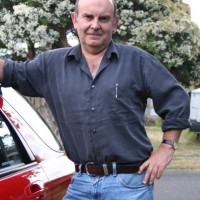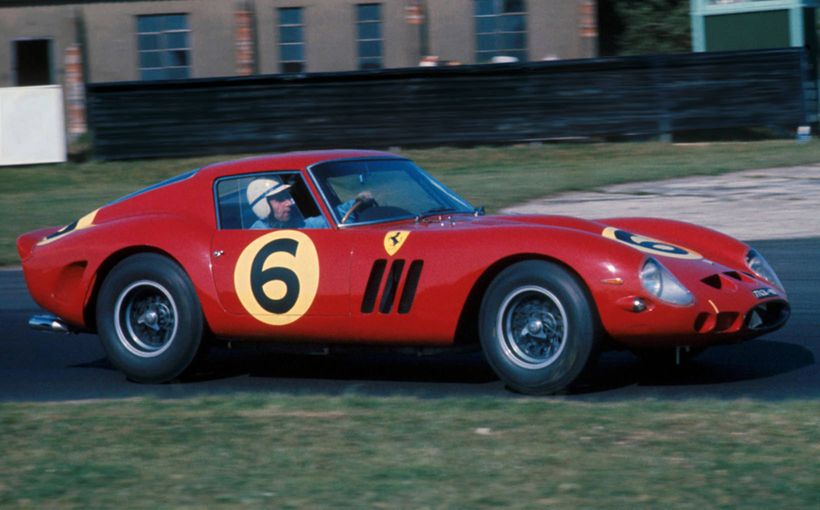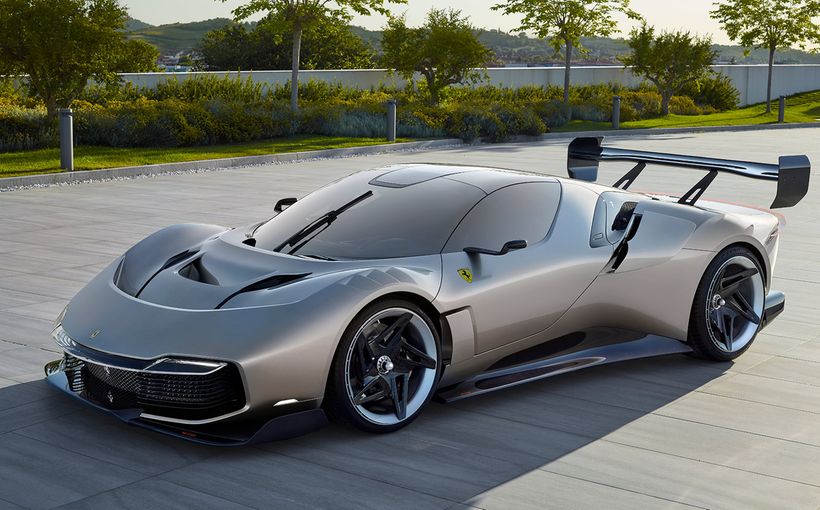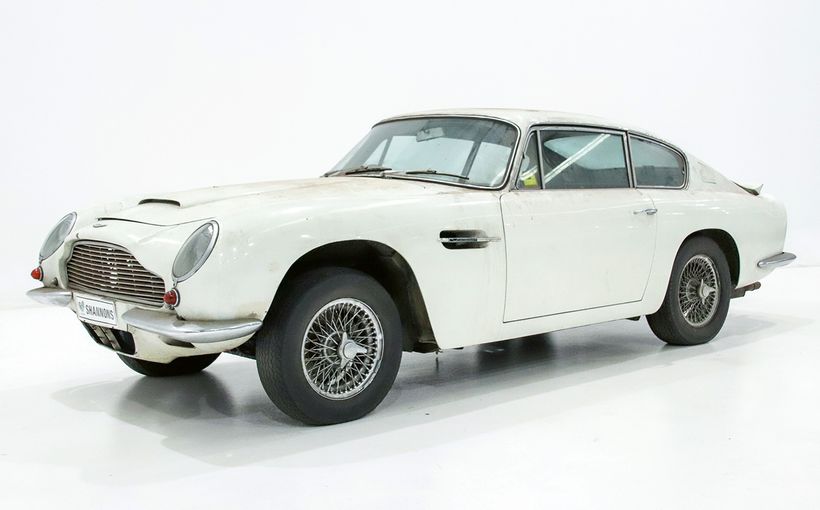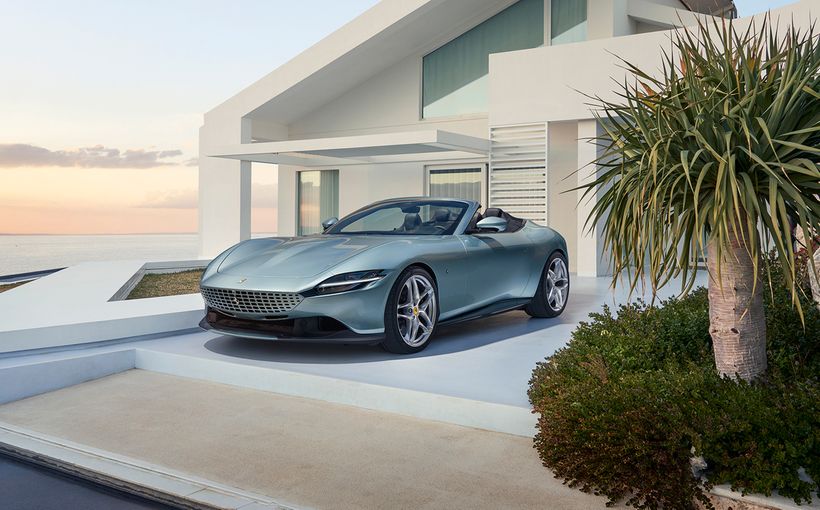Alfa Romeo 105 Coupe - Essence of Ferrari

The new 105-series sedan and coupe range marked Alfa Romeo’s 1964 return to the Australian market under Adelaide washing machine and concrete mixer magnate Harold Lightburn. As part of a plan to supplement his primitive Zeta economy cars with an Adelaide-assembled Alfa Romeo range, Lightburn managed to land barely 65 of the new models before the Zeta’s failure killed the Alfa Romeo connection in August 1965. Lightburn’s folly left Australians wanting more.
Separate to Lightburn’s operations in Sydney, Melbourne, Brisbane, Adelaide and Perth, established Australian racing driver and car dealer Alec Mildren based in Pymble, NSW, had forged his own relationship with Alfa Romeo. While in Italy sourcing parts for his Maserati-powered open wheeler campaign, he sent back a selection of 1962-63 Alfa Romeos for his own outlet as part of his plans to field an Alfa Romeo motor racing team.
Mildren’s groundwork culminated in a staggering win by a 105-series Autodelta-prepped Giulia Ti Super sedan in the 1964 Sandown Six-Hour, endearing Mildren behind the scenes to the Alfa Romeo brass in Italy. As Lightburn floundered, Mildren was handed the NSW import and distribution rights for NSW and Queensland by September 1965. After bringing former Lightburn dealers on board, Mildren was later joined by Brian Foley in Caringbah and fellow Alfa racer, John French in Brisbane.

Few imports were handled by such hands-on enthusiasts who lived and breathed Alfa Romeo like Mildren’s network, except perhaps the Victorian distributors who were also signed-up in September 1965. Led by Murray Wright and his MW Motors network that marketed Skoda, the Victorian crew brought a state-wide network of enthusiastic country outlets to the table.
MW Motors also recruited former Lightburn dealers in Melbourne, as well as racing driver Bob Jane with his prime South Yarra site and other prestige dealers. The company then extended its reach into Tasmania by sending the female sales manager from MW Motors to identify and recruit a suitable outlet.
After compiling a list of candidates, she unexpectedly stepped away from the final selection process, then resigned from MW Motors and married the successful Hobart encumbent. As with Mildren’s network, Murray Wright’s tentacles were more than just shared business interests, they were family.

What the MW Motors crew lacked in direct Alfa Romeo competition activity, their depth of collective resources could buy and campaign whatever racing Alfa Romeo they needed then recruit drivers of their choice. Even Australian Porsche distributor Alan Hamilton would get a steer of the network’s specially imported Giulia GTA.
The intense competition between the Melbourne-based MW Motors network and Mildren’s Sydney-based operations was escalated by the need to protect their respective operations from being taken over by the other. Independent Alfa Romeo service specialists added to the competition presence.
Alfa Romeo’s distributors in South Australia and Western Australia could then market their cars in the afterglow of this eastern state rivalry that radiated across the Nullarbor.
Such economies of scale slashed prices drastically from Lightburn days. The Giulia 1600 Ti sedan fell from $3990 to $3730 and the 1600 GT Sprint coupe dropped from $5446 to $4790, none of them cheap but now in the ball park.

The rush was on to promote both the sedan and coupe ranges on the track and in the showroom.
After total Alfa sales hit 51 in 1964 before plummeting to just 30 in 1965, they raced up to 350 in 1966 and from there, they never looked back. As sales raced up to 821 in 1969, Alfa Romeo set up a permanent factory head office in Sydney, almost entirely on the back of 105-series sales.
This ultimately brought a unified factory presence and a more mainstream model range co-ordinated by a head office on the scene. Yet it was the ever changing range of specialist models sold and raced by enthusiasts that captivated Australians on and off the track and defined Alfa Romeo’s golden days in Australia.
The 105-series was unusual in offering a strong sedan and coupe heritage that enjoyed sales and motorsport success independent of each other. The sedan will be the subject of a future story. Yet it was the marvelous little 105-series coupe in its many forms that would charm Australians from 1964 until 1975, almost unabated!

Guide to 105-series Giulia Coupes sold in Australia
By any objective measure, the Australian Alfa Romeo range defies logic and in key areas was very different to other markets. Because the cars were being marketed on a regional basis then sold by the same fiercely independent dealers who also had a passion for racing the latest and most competitive Alfa Romeos, it starts to make sense.
These dealers knew exactly who was shopping in their new and used car showrooms on a day to day basis. They also knew what they and their clients were racing against. They were in the unusual position as state distributors of knowing exactly what was coming from Italy and tailoring their stocks to suit. It explains why Alfa’s latest and greatest coupe models were being offered at ever increasing prices at one level, while all time favourites were being re-cycled in mildly updated packaging. This is an attempt to impose some order when there often wasn’t any:

Giulia Sprint Speciale (SS)
Years: 1963-66
Engine: 1570cc/96kW
Code: Type-101
What was it?
This one is listed because it was sold in parallel with the 105-series as a special-bodied version of the Giulia Sprint but in fact it was an upgraded version of a 1957 derivative of the previous 101-series. Its Bertone styling was a development of the Disco Volante (flying saucer) concept cars but the older mechanical package was revealed by its rear drum brakes. Although only 1400 were built, several RHD examples reached Australia.
Giulia Sprint GT
Years: 1964-66
Engine: 1570cc/79.5kW
Code: Type-105.04
What was it?
The first and most desirable of all according to some, as first imported by Lightburn. Fine bar grille had centre shield with six horizontal bars, single headlights and vertical parkers at each end. Another Bertone-styled body, this one is credited to a young Giugiaro with strong family resemblance to the Alfa Romeo 2600 Sprint. The stepped bonnet and curved grille extensions for headlight and centre grille shield location are regarded as the most authentic and desirable features for this shape.
Tall and skinny 15 inch wheels, four wheel disc brakes and twin 40mm DCOE Webers were endearing parts of the equation. Main criticisms included weak gearbox synchros, dash reflections that made certain gauges unreadable and general poor durability of the trim and crackle grey dash finish. Aussie owners quickly learnt that the low hanging finned alloy sump was easily destroyed in nose to kerb parking and rear quarters would distort if hammered over rough roads. Although the live rear axle featured lower trailing arms, upper centre diff-arm, coil springs and long voided bump stops, the chassis was unusually sensitive to tyre choice.

Giulia Sprint GT Veloce
Years: 1966-68
Engine: 1570cc/82kW
Code: Type-105.37
What was it?
The local replacement for the Sprint GT. Torque and horsepower rose slightly from more efficient cylinder head porting, bigger valve lift and revised timing. Look for the three horizontal grille bars, new centre grille shield with seven horizontal bars and green quadrofoglio on the C-pillar. On the road, the differences were more pronounced than increases suggested. A revised gearbox offered stronger synchros. New front seats were heavily contoured and rear seats were hollowed-out for extra room. Although wood finish replaced the crackle grey on the dash, the reflections continued. Centre horn push replaced by buttons in each of the steering wheel’s three-spokes.
Giulia Sprint GTA
Years: 1965-66
Engine: 1570cc/99.1kW
Code: Type-105.04/A
What was it?
Homologation special for FIA Touring class. Not officially available locally but several right hand drive examples did reach here as special imports. The A stood for Allegerita or lightened, after the aluminium body panels, plexiglass windows and minimalist interior helped shave 400lbs/180kg. Disc rotors were bigger and wider 14 inch wheels fitted. Heavily revised engine featured special twin-plug cylinder head, bigger 45 mm Webers, extra sump capacity. Road version had 99.1kW but GTA also available in special race or rally-prepared versions with up to 127kW.
Giulia Sprint GTC
Years: 1965-66
Engine: 1570cc/79.5kW
Code: Type-105.29
What was it?
A low volume cabriolet version of the first Giulia Sprint GT built as a coupe then converted by Touring with some loss in rigidity. Dash finish was changed from grey to black. Not every example was the same as Touring addressed rigidity during production run. A small number of the 99 RHD examples were officially delivered in Australia.

1750 GT Veloce
Years: 1968-70
Engine: 1779cc/89kW
Code: Type-105.45
What was it?
A new model packaged in a major variation of the original body. The prominent quad headlights, new single-bar grille and flush bonnet left the coupe looking too much like the sedans for some. Front parkers/indicators were mounted below the grille on the early pointy-edged bumpers and there were now twin centre slots of matching height.
The new twin-pod dash cut reflections and minor gauges were moved to the new centre console. The large box pleats in the revised seating were too prominent for some.
Alfa resisted the 1800 GTV name to revive traditional 1750 badge as bore was boosted by 2mm and stroke was increased from 82 to 88mm to deliver what many regard as the smoothest and most flexible engine for a 105 coupe. Increased power arrived 500rpm earlier along with boost in torque. Taller gearing dropped engine speeds and fuel consumption significantly. However, the cut from 7000 to 6000rpm maximum and taller gearing left performance similar to previous 1600 GTV except it was much easier to access.
Drivetrain gained hydraulic clutch, larger clutch plate and bigger diameter tail shaft sections. Front suspension geometry and spring rates were revised for a better ride and a new rear anti-roll bar was added to maintain handling. Bigger front brakes and rear pressure limiter improved braking while bigger 14inch rims and new Michelin XAs tyres were highly praised. Early local tests described an 18 gallon/81 litre long range tank (10 gallon/45 litre std) fitted for Bathurst. First local examples had traditional cross-over air intake. From 1969, a smaller black inlet box on carburettor side was fitted to create space for dual braking system and servo.
1750 GT Veloce Series II
Years: 1970-72
Engine: 1779cc/89kW
Code: Type-105.45
What was it?
A major running change during 1970 picked by body-mounted wider front light units under the headlights and repeater lights ahead of the front wheel arches. New flat-edged bumper style featured over riders front and rear. A softer fine-pleated seat pattern, alternator, heated rear window and halogen headlights were also welcome changes. All examples from this series should have twin brake boosters on passenger’s side and slimline air-cleaner box on carburettor side to create space for them. Late in 1971, headrests were upgraded for local ADR head-restraint requirement. Depending on batch, carburetors were Weber, Solex or Delorto, a matter of chance for buyers that continued until the end of the 2000 GTV.

1300 GT Junior
Years: 1969-73
Engine: 1290cc/67kW
Code: Type-105.31
What was it?
Available much earlier in other markets for tax breaks, the GT Junior was only launched locally after the 1750 GTV created a gap for those who rated Alfa intangibles, a 20 per cent price cut and lower running costs above outright performance. It featured the outgoing 1600 GTV’s single headlight grille but with a single grille bar matching the 1750 GTV. Unlike the 1750 GTV, there were no centre slots above the early style bumper and the dash was the earlier 1600 GTV style. Seats were also different with their simpler pleat style and were judged superior to the 1750 GTV Series I seats.
The 1300 engine had a smaller bore and stroke but was otherwise similar to the 1600. Power loss and shorter gearing contributed to its junior performance.
A facelift followed later in 1969. The 1750’s twin pod dash was added but not the centre console hence the minor gauges were attached to the base of the dash. The later black inlet box on the carburettor side was added to create space for the new brake servo. A new hydraulic clutch, 14 inch wheels and the latest front end geometry plus rear anti-roll bar were brought in line with the 1750 GTV.
Late in 1971, the 1300 GT Junior was again repackaged, this time with the late model square-edged bumpers without over riders, flush bonnet and the front parking light/indicators above the bumper. The twin centre slots below the grille and side repeater light position were similar to the 1750 GTV Series II while the dash and two spoke steering wheel were carryover from the later 1300 GT Junior. It ran alongside the GT 1.6 in this later specification before it was withdrawn in mid-1973.
2000 GTV
Years: 1972-75
Engine: 1962cc/99kW
Code: Type-105.22
What was it?
The final 105 series coupe upgrade easily picked by the more detailed grille with integrated centre shield, less prominent headlights, larger tail lights and smaller centre caps on the wheels. Minor instruments were moved between the two main instrument pods and face level fresh air vents were added. A new fine pleat seat pattern looked the goods but the seats were found wanting.
Engine was upgraded over the 1750 by boosting bore from 80 to 84mm for a major improvement in performance but the loss of metal in the block led to head gasket and more serious problems. Maximum revs dropped back to 5700rpm taking it further away from the original’s sportier nature.
Placement of steering column stalks and other controls such as wiper/washers were a concern in every market. Carryover floor-hinged pedals dictated by mechanical layout were also a universal disappointment for RHD testers compared to the LHD’s pendant pedals.
It polarized testers more than the earlier 1600 versions. Modern Motor dismissed it as an anachronism while Sports Car World pitched it against the latest BMW 2002 and gave it the nod for its performance and driver involvement. A three speed automatic was offered as an option in May 1975 before final stocks were cleared in 1976 ahead of new ADR27a emissions requirements.

GT 1.6
Years: 1972-74
Engine: 1570cc/82kW
Code: Type-105.05
What was it?
An almost bizarre re-packaging of the final Giulia Sprint GT Veloce. Local distributors were smart enough to lose the GT 1.6 Junior badge applied elsewhere as the earlier 1600 was still much revered. Arriving several months after the 2000 GTV launch in 1972, it shared most late model 1300 GT Junior body details powered by the final 1600 Sprint GT Veloce engine. The smaller brakes of earlier cars remained. The main difference was its 2000 GTV wheels and centre-cap style.
The GT 1.6’s price saving of $1000 over the $6900 2000 GTV made more sense as the performance drop was not so dramatic and the 1.6-litre package was sweeter all round. The 1300 GT Junior continued alongside the GT 1.6 and 2000 GTV but by 1972 was too far off the pace for Australian conditions. As the savings between the 1.3 and 1.6 had dropped to just $400 in 1973, the 1.3 stocks were left to run out a year before the June 1974 withdrawal of the 1.6 version.
Related Coupes
Alfa Romeo Giuilia TZ/TZ2
Related in name and drivetrain only, this was a purpose-built competition coupe first seen in 1962 followed by a 1963 track debut. A lightweight special built by Zagato, the first TZ streamlined body featured a blunt Kamm tail and bulbous roofline. The tubular chassis featured independent suspension all round and the rear disc brakes, a first for an Alfa, were inboard. Power was 96kW for the street version but could be boosted to 126kW for the full race version. The engine was mounted well back in the chassis. Fibreglass panels were offered later to cut weight. Produced for the GT class, the GTZ as it was also known struggled initially against 2-litre rivals but found its legs by 1965 when a TZ2 version was offered. On sale for just one year, the TZ2 featured wider wheels and a lower, flatter roofline that left it marginally faster. Both versions reached Australia and were spectacular sights on local circuits.
Alfa Romeo 1300/1600 Junior Z
Zagato’s next special body was built on a Giulia Spider chassis with a lightweight steel and aluminium 2+2 body that not only cut weight but shifted weight distribution for just 53 per cent over the front wheels. Available from 1970, the 1300 version was officially offered as a RHD delivery in Australia on special order. The 1600 followed in 1972 before production ended in 1975. The 1600 version is particularly rare. There are examples of both engine sizes in Australia.
Alfa Romeo Montreal 1970-77
Built for Expo 67 in Montreal, the Gandini-styled coupe from Bertone was placed into production from 1970 with a variation of the 2.5-litre Type 33 V8 powering the 105-series platform as the Type 105.64. For Australians, such a car shouldn’t have been a surprise as the Type 33 V8 from the Mildren team’s Brabham Alfa was transplanted into the ex-Mildren 1600 GTA for a spectacular sports sedan.

So what happened?
Along with the equally desirable Spiders and the worthy sedans, the 105 series seemed to mark the end of Alfa Romeo as a finely crafted enthusiast’s car. The front drive AlfaSud range was inspired but rust-prone and no match for the 105 series. The subsequent 33 series did little to advance Alfa’s reputation and was not long for this earth.
The Alfetta sedans and coupes along with the various 75 and 90 offshoots never got the transmission or gear linkages they deserved before quality slipped. The shared-platform front drive 164, despite its beautiful engine, was too close to a Magna or Camry for Australians.
Alfa Romeo simply upped and left Australia in the early 1990s, leaving abandoned dealers scratching their heads, only to return a decade later with a range of front drive Fiat-based models. The Alfa faithful can only hope that mooted rear drive models based on Mazda and Chrysler platforms might pick up the threads left by the 105 almost 40 years ago.
Reference: Alfa Romeo Downunder by David Wright
Protect your Alfa Romeo. Call Shannons Insurance on 13 46 46 to get a quote today.


